Exercise 1. Check the meanings of the words in blue in sentences 1-3. Then read the text. Which sentences does the writer agree with?
(Kiểm tra nghĩa của những từ màu xanh trong câu 1-3. Sau đó đọc văn bản. Tác giả đồng tình với câu nào?)

1. It's important to protect all animals because they are all interesting.
2. It's best to protect the beautiful species, not the ugly ones.
3. A lot of species become extinct every year. Animals in danger need our help.
BLOBFISH we love you!
The blobfish isn't the most beautiful or common fish on the planet. It has a dull colour and you don't usually see it because it lives 1,000 metres under the seas near Australia.
But now through magazines and the internet, the blobfish is famous because people say that it's the ugliest animal in the world.
Every year, thousands of species of animals become extinct. We often see information about the biggest, the most interesting, the most beautiful and the most colourful, such as whales, butterflies or pandas. The weirdest or ugliest animals also need our help.
Are they really ugly? No, they're interesting and rare. The best idea is to protect all animals.
Tạm dịch bài đọc:
BLOBFISH chúng tôi yêu bạn!
Cá blobfish không phải là loài cá đẹp nhất hoặc phổ biến nhất trên hành tinh. Nó có màu sắc xỉn và bạn thường không nhìn thấy vì nó sống sâu 1.000 mét dưới vùng biển gần nước Úc.
Nhưng bây giờ thông qua các tạp chí và Internet, cá blobfish nổi tiếng vì mọi người cho rằng nó là loài động vật xấu xí nhất trên thế giới.
Mỗi năm, hàng nghìn loài động vật bị tuyệt chủng. Chúng ta thường thấy thông tin về những con lớn nhất, thú vị nhất, đẹp nhất và nhiều màu sắc nhất, chẳng hạn như cá voi, bướm hoặc gấu trúc. Những con vật kỳ lạ nhất hoặc xấu xí nhất cũng cần sự giúp đỡ của chúng ta.
Chúng có thực sự xấu xí? Không, chúng thú vị và quý hiếm. Ý tưởng tốt nhất là bảo vệ tất cả các loài động vật.
1. It's important to protect all animals because they are all interesting.
( Điều quan trọng là phải bảo vệ tất cả các loài động vật vì chúng đều thú vị.)
2. It's best to protect the beautiful species, not the ugly ones.
( Tốt nhất hãy bảo vệ những loài đẹp đẽ chứ không phải những loài xấu xí.)
3. A lot of species become extinct every year. Animals in danger need our help.
( Rất nhiều loài bị tuyệt chủng hàng năm. Động vật đang gặp nguy hiểm cần sự giúp đỡ của chúng ta.)
- protect (v): bảo vệ
- species (n): loài
- become extinct: trở nên tuyệt chủng/ bị tuyệt chủng
- danger (n): sự nguy hiểm
- help (n): sự giúp đỡ
The writer agrees with the sentences 1 and 3.
(Tá giả đồng tình với câu 1 và 3.)

Các bài tập cùng chuyên đề
Exercise 2. Read and listen to the text and write True or False.
(Đọc và nghe văn bản và viết Đúng hoặc Sai.)
1. The blobfish is quite rare.
2. The blobfish sometimes lives in rivers.
3. The blobfish is well-known through magazines and the internet
4. There's a lot of information about pandas, but not whales.
Exercise 1. Check the meanings of the verbs in the box. Look at the quiz and complete the questions with eight of the verbs. Listen and check your answers.
(Kiểm tra nghĩa của các động từ trong khung. Nhìn câu đố và hoàn thành các câu hỏi với 8 động từ. Nghe và kiểm tra câu trả lời của em.)
|
swim drink hear communicate fly jump survive kill climb grow move run see (x2) |
Animal skills quiz
Some animals are fast, some are big and strong. Some are intelligent, some are dangerous. What do you know about animals and their skills?
1. Can elephants (1)..................... with their ears and their feet?
a. Yes, they can.
b. No, they can't
c. Some can and some can't.
2. How big can a gorilla? (2).....................
a. 150 kilos.
b. 200 kilos.
c. 250 kilos.
3. Some scorpions are dangerous. Can a scorpion (3)..................... a human?
a. Yes, it can.
b. No, it can't.
c. Some can and some can't.
4. Camels don't (4)..................... a lot of water. How many months can a camel (5)..................... without water?
a. Three months.
b. Six months.
c. Nine months.
5. How far can an eagle (6).....................? It can (7)..................... a small animal from a distance of
a. 500 metres.
b. one kilometre.
c. more than one kilometre.
6. Ostriches can't (8)..................... but how fast can they (9).....................?
a. Six kilometres an hour.
b. Sixteen kilometres an hour.
c. Sixty-five kilometres an hour.
1. Check the meanings of the words in the box. Which of these do you think is a problem for the Philippine eagle? Read the information leaflet and check.
(Kiểm tra nghĩa của các từ trong khung. Bạn nghĩ cái nào là vấn đề của đại bàng Phi-lip-pin? Đọc thông tin trên tờ rơi và kiểm tra.)
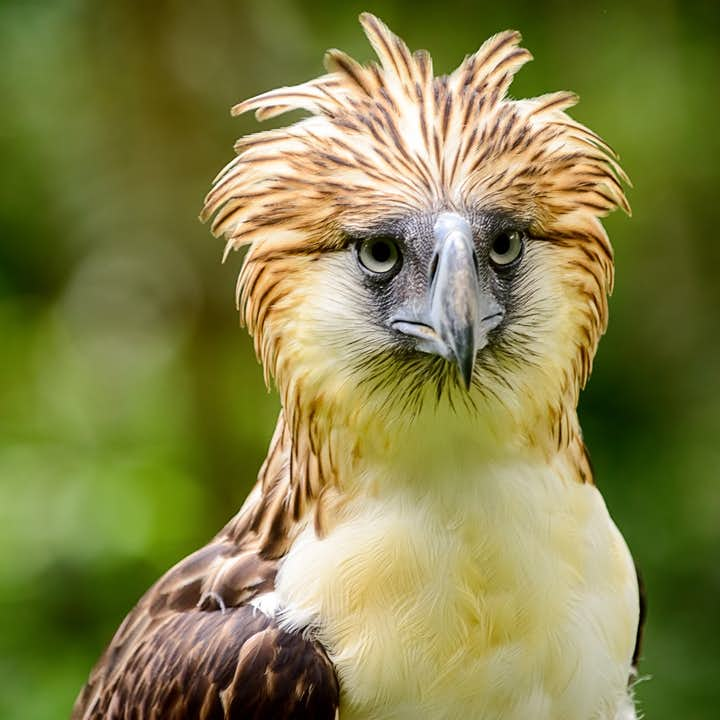
|
farming pollution hunting fishing |
LET'S PROTECT…The Philippine eagle
The Philippine eagle lives in the forests of the Philippines. Adult birds can be one metre long and weigh eight kilos. It eats small animals such as snakes, bats, and rats. It's in danger now and it's rare. The biggest problem is human activity like farming. You can find information on the website of the Philippine Eagle Foundation. It explains how to protect the eagle. For example, it's possible to 'adopt' an eagle.
2. Read the text again. Why is the Phillipine eagle special? What kinds of animals does it eat?
(Đọc lại văn bản. Tại sao đại bàng Phi-lip-pin đặc biệt? Nó ăn những loại động vật nào?)
Exercise 3. Read the text again and answer the questions.
(Đọc lại văn bản và trả lời các câu hỏi.)
1. Which type of animal doesn't live on land?
2. Which types of animals have got scales?
3. Which type of animal hasn't got lungs when it's young?
4. Which type of animal feeds its babies milk?
5. Which type of animal is different when it's older?
Exercise 4. Which group are these animals from? Use the information to classify them.
( Những động vật này thuộc nhóm nào? Sử dụng thông tin sau để phân loại chúng.)
|
crocodile shark camel eagle |
|
1 |
Does it feed its babies milk? |
|
|
Yes. It's a mammal. |
No. Go to number 2. |
|
|
2 |
Has it got feathers and wings? |
|
|
Yes. It's a bird. |
No. Go to number 3. |
|
|
3 |
Has it got fins? |
|
|
Yes. It's a fish. |
No. Go to number 4. |
|
|
4 |
Has it got scales? |
|
|
Yes. It's a reptile. |
No. It's an amphibian. |
|
A. Listen and read. Then repeat the conversation and replace the words in blue.
(Nghe và đọc. Sau đó lặp lại bài hội thoại và thay thế các từ màu xanh.)
1. Stig: This is my parrot. His name’s Otto.
Nadine: Wow! He’s amazing! He’s really beautiful!
Parrot: Thanks.
(lizard, frog)
2. Nadine: He’s very colorful.
Stig: Yes, he is.
(beautiful, small)
3. Nadine: Is he noisy?
Stig: Yes, he is. He’s very noisy.
(quiet, friendly)
4. Nadine: And he’s really big! Argh!
(scary, noisy)
DO YOU KNOW?
This lizard is really small. It is the size of a coin. Where is it from?
a. Madagascar
b. Thailand
c. Brazil
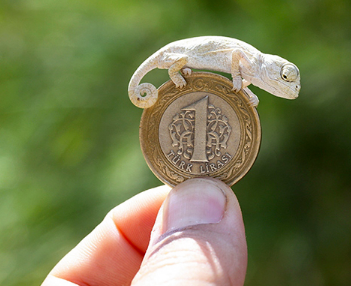
B. Read the article quickly. Underline the adjectives.
(Đọc nhanh văn bản. Gạch chân các tính từ.)
THE AMAZING AYE – AYE
This amazing animal is an aye-aye. It’s from Madagascar. It lives in the rainforest.
Aye-ayes are black or brown. They are very small. Their tails are long. Their eyes are big and so are their ears. They have really long, strong 5 fingers. They catch food with their fingers. When they move, they‘re not fast—they’re very slow.
Some people think aye-ayes are scary because they look strange. But aye-ayes are friendly animals!
C. Read again. Where do aye-ayes live?
(Đọc lại. Con aye-ayes sống ở đâu?)
A. Choose the correct answers for The Amazing Aye-Aye.
(Chọn câu trả lời đúng cho bài đọc The Amazing Aye – Aye.)
1. What is this article about?
a. Madagascar
b. rain forests
c. a strange animal
2. What color are aye-ayes?
a. brown or black
b. black or whit
c. brown or grey
3. Aye-ayes catch food with their long_______.
a. hands
b. tails
c. fingers
4. Some people think aye-ayes are scary because _________.
a. they are slow
b. they are small
c. they look strange
5. Aye-ayes are NOT____________.
a. small
b. fast
c. friendly
DO YOU KNOW?
What is this?
a. a catfish
b. a horsefish
c. a dogfish
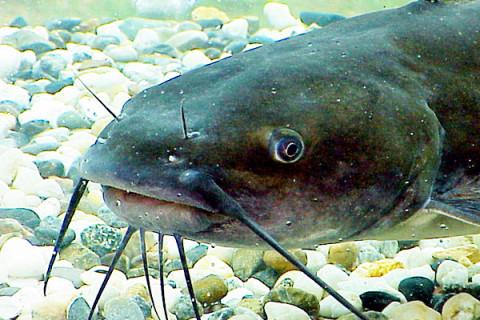
|
jaguar sea turtle dolphin shark crab howler monkey |
Draw and ask. Choose four animals from the box above and draw them on the beach picture. Ask a partner questions about the animals in his or her picture. Then draw your partner's picture on page 133. Compare the pictures.
- What animals are in your picture? Is there a shark?
- Yes, there's a shark.
- Where is it?
- It's behind the seaweed.
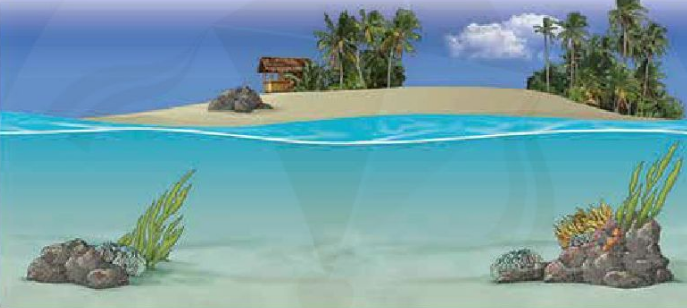
|
jaguar sea turtle dolphin shark crab howler monkey |
Draw and ask. Choose four animals from the box above and draw them on the beach picture. Ask a partner questions about the animals in his or her picture. Then draw your partner's picture on page 133. Compare the pictures.
- What animals are in your picture? Is there a shark?
- Yes, there's a shark.
- Where is it?
- It's behind the seaweed.
B. Read the title. Why do you think these animals are strange?
(Đọc tiêu đề. Em nghĩ vì sao những con vật này lại kỳ lạ?)
STRANGE SEA ANIMALS
Do you know that some animals are camouflaged? This means their color is the same as the colors around them. Some camouflaged animals hide in seaweed, rocks, and sand. Look at the photo on the left. This looks like seaweed, but it’s not! It’s the leafy seadragon. It hides in the seaweed. It's the same color as seaweed. Like the seaweed, its body is also in the shape of a leaf. Look at the photo below. This is a stonefish. It hides on the sand, near rocks. It looks like a rock. Where are its eyes and its mouth?
C. Read the article quickly. Underline the places where the animals hide.
(Đọc nhanh bài viết. Gạch dưới những địa điểm động vật ẩn nấp.)
A. Read the article quickly. What's special about Kanzi?
(Đọc nhanh bài báo. Điều đặc biệt về Kanzi là gì?)
a. He can write.
b. He can speak English.
c. He can communicate with humans.
ANIMALS SMART
This is Kanzi, a bonobo chimpanzee. Bonobo chimpanzees are from Africa. There are only about 10,000 to 50,000 bonobos in the world today. Kanzi lives in a zoo in the United States. He is very smart. He can communicate with humans. Kanzi can understand about 3,000 English words. He can’t speak, but he can use the computer to say about 500 words. He points to pictures on a computer to say these words. He uses between 30 and 40 words every day.
Kanzi can also make a fire and cook marshmallows. He knows that fires are hot. Kanzi can’t sing, but he can play the piano. Kanzi teaches his son Teco. Now Teco can use a computer, just like Kanzi.
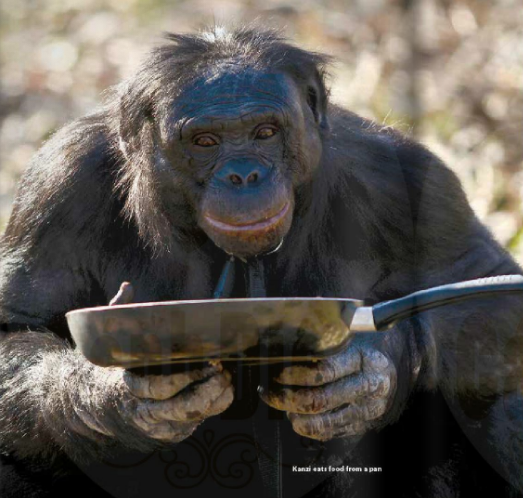
1. Read the text. Choose the correct answer.
(Đọc văn bản. Chọn câu trả lời đúng.)
The butterflies are famous because they...
a. fly to very cold places.
b. go on a long journey.
c. always move south on the same day.
AMAZING BUTTERFLIES
A. Imagine thousands of colourful butterflies in the sky. They are orange and black with enormous wings.
B. These are the famous monarch butterflies. Every year, they fly more than 4,500 kilometres from Canada and North America down to the mountains of Mexico. It is the longest journey of any butterfly.
C. Their journey usually starts in September or October. They can sometimes fly more than 100 kilometres in one day and they often fly very high too - perhaps 1.6 kilometres!
D. Sadly, many don't survive the long and dangerous journey because they become very cold.
E. Monarchs are the most famous butterflies in North America. There are books, TV programmes and websites about them. There's an amazing 3D film too - it's called Flight of the Butterflies.
2. Read the text again. Match sentences 1-4 with paragraphs A - E.
(Đọc văn bản một lần nữa. Nối câu 1-4 với đoạn văn A - E.)
A long journey high in the sky. C
(Một hành trình dài bay cao trên bầu trời. - C)
1. See the monarchs at the cinema.
(Xem loài bướm vua ở rạp chiếu phim.)
2. A very long journey for a butterfly.
(Một cuộc hành trình rất dài đối với một con bướm.)
3. Lots of beautiful butterflies!
(Rất nhiều loài bướm đẹp!)
4. No butterfly is safe on this difficult journey.
(Không có con bướm nào là an toàn trên hành trình khó khăn này.)
3. Read the text again. Correct the information in the sentences.
(Đọc lại văn bản. Sửa thông tin trong các câu.)
The butterflies have got very small wings. -> enormous
(Những con bướm có cánh rất nhỏ. -> to lớn)
1. The butterflies fly from South America and Canada to Mexico.
2. The monarchs make the fastest journey of all the butterflies in the world.
3. In one hour, the monarchs can go more than 100 kilometres.
4. When it is very hot, a lot of the butterflies die.
5. You can't find a lot of information about monarch butterflies.
3. Read the notes. Then complete the text.
(Đọc ghi chú. Sau đó hoàn thành văn bản.)
|
What are servals? African wild cats Where do they live? countries like Africa/ Tanzania How big are they? one metre long taller than most cats How heavy are they? eighteen kilos How fast can they run? eighty likometres an hour What do servals eat? Rats, frogs, snakes can jump and kill birds Are servals in danger? Yes, in some places-smaller numbers. Problem - hunting |
Size: Servals can be (3)____ long. They have long legs and they are one of the (4)_____ animals in the cat family. Some servals can weigh (5)_____Servals are African wild cats. They live in different countries in Africa such as (1)____ and (2)_____.
Speed: Servals are fast animals. They can run at (6)_____
Food: Servals eat animals like rats, and other small creatures such as (7)_____ and (8)_____. They (9)_____ up to three metres and (10)_____ birds too!
Problems: In some parts of Africa there are now (11)_____ of servals and they are in danger. The biggest problem is human activity like (12)_____
Read the passage carefully and choose the correct answer.
People usually sing because they like music or because they feel happy. They express their happiness by singing. When a bird sings however, its song usually means much more than that the bird is happy. Birds have many reasons for singing. They sing to give information. Their songs are their language.
The most beautiful songs are sung by male (cock) birds. They sing when they want to attract a female (hen) bird. It is their way of saying that they are looking for a wife.
Birds also sing to tell other birds to keep away. To a bird, his tree or even a branch of tree, is his home. He does not want strangers to come near him, so he sings to warn them.
If a bird cannot sing well, he usually has some other means of giving important information. Some birds dance, spread out their tails or make other signs. One bird has a most unusual way of finding a wife. It builds a small garden of shells and flowers.
2. Read the text. What is Hannah's project about? What is she learning about at school?
(Đọc văn bản. Dự án của Hannah là gì? Cô ấy đang học về gì ở trường?)
3. Complete the questions with the given words. Then read the text again and answer the questions. There are two extra words.
(Hoàn thành các câu hỏi với các từ đã cho. Sau đó đọc lại văn bản và trả lời các câu hỏi. Có hai từ thừa.)
|
how how many what who why how many what |
How old is London Zoo?
More than 180 years old.
1. ______ people go to the zoo every year?
2. ____helps the visitors at the 'Meet the giraffes' experience?
3. ____ is the biggest problem for giraffes?
4. ____ giraffes are there in Africa?
4. Hannah is at the 'Meet the giraffes' experience at the zoo. Listen to her conversation with the zookeeper. Can Hannah take photos of the giraffes?
(Hannah đang tham gia trải nghiệm 'Gặp gỡ hươu cao cổ' ở sở thú. Hãy lắng nghe cuộc trò chuyện của cô ấy với người trông coi vườn thú. Hannah có thể chụp ảnh hươu cao cổ không?)
Choose the best answer to complete the passage.
Whales live in the (1) ______. They can stay underwater for 30 to 90 minutes at a time. Whales cannot breathe under water. They have a blowhole in the top of their (2) ______to breathe through when they come to the surface of the water. Whales are the (3) ______animals in the ocean. They can be over 100 feet long and weigh over 150 tons. Whales eat krill, which is like shrimp, as well as fish, and plants. They are good (4) _____and move their tails up and down and use their flippers to turn. They (5) ________together in groups called “pods.”






